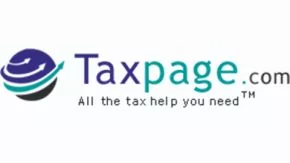Have You Made a Mistake on Your Tax Return? Here Is How to Correct It.
It is not uncommon for individuals to file their taxes and then realize they have made a mistake. Perhaps a slip arrived late and was not included in the return, some income was accidentally omitted, or certain deductions were overlooked.
Do not panic — this article will walk you through the process of amending your tax return after it has been filed.
When You Can—and Cannot—Amend a Filed Tax Return
You may need to make an adjustment or provide information that was omitted from a previously filed tax return. This could include a missing tax slip—such as an RRSP contribution receipt—or unreported income, such as a T4 slip. It may also involve a deduction that was not claimed.
However, amendments cannot be made for every type of change. An individual cannot use this process to apply for credits or benefits, update personal information (such as a mailing address, marital status, name, direct deposit details, or email), make a new election, or revise an election that has already been made. Requests of that nature must be handled separately through the appropriate channels and will often require the assistance of a knowledgeable Canadian tax lawyer.
When using certain e-filing tax software platforms, you may be restricted from making amendments if the Canada Revenue Agency (CRA) has not yet issued a Notice of Assessment. However, generally speaking, nothing prevents a taxpayer from requesting an amendment by submitting a T1 Adjustment Request Form, even before the Notice of Assessment is issued. It is possible to amend tax returns for up to ten previous years.
How to Amend a Tax Return: Online, by Mail, or Through ReFile
An individual may amend a tax return by submitting a T1 Adjustment Request Form (T1Adj), either through the CRA online portal, by mail or some certified tax software platforms. Supporting documents, receipts, and any evidence relevant to the requested adjustment must be included.
To make changes using the online form, the individual must enter his or her Social Insurance Number, name, and address. He or she must then specify the line number on the previously filed return that requires adjustment, along with the corrected information. Within the CRA portal, the individual should look for the feature labelled "Change My Return" or a similar option and follow the prompts to complete the amendment process.
To file by mail, the individual must complete the T1 Adjustment Request Form and send it—along with supporting documents—to the appropriate tax center.
As an alternative to the T1 Adjustment Request Form, most certified tax software platforms offer a "ReFile" feature for individuals who originally filed their returns through that software. This method is often more convenient for recent tax years.
Once the Canada Revenue Agency processes the adjustment, it will issue a Notice of Reassessment reflecting the accepted changes, a decision letter explaining any denied adjustments, or both—if only some of the requested changes were approved.
Voluntary Disclosure vs. Taxpayer Relief: Which Option Is Right for You?
If a taxpayer suspects that an error in his filed return will result in interest and penalties after amendment, he may wish to consider pursuing relief under the CRA Voluntary Disclosure Program or the Taxpayer Relief Program.
If interest or penalties have accrued on the taxes owed due to the amendment being filed late—typically more than one year after the deadline for the original return—the taxpayer may want to explore the Voluntary Disclosure Program. This program offers relief from interest and penalties and may also provide protection from criminal prosecution. There are new VDP rules as of October 1, 2025.
Alternatively, some taxpayers may choose to amend their returns first and then seek Taxpayer Relief from the CRA.
To determine whether the Voluntary Disclosure Program or Taxpayer Relief is more appropriate, consult with our experienced Canadian tax lawyers for guidance.
PRO TAX TIPS: Looking Back Ten Years – When to Think Twice Before Amending a Return
Since adjustments can be made for tax years dating back as far as ten years, a taxpayer should exercise caution—particularly where the adjustment may reveal taxes owing. Such adjustments could result in a CRA tax audit, interest charges, or penalties.
Before proceeding with any amendment that may expose the taxpayer to unexpected liabilities, it is strongly advisable to consult a top Canadian tax lawyer. Legal Canadian tax counsel can help determine whether a Taxpayer Relief application or a Voluntary Disclosure Program application would be the more appropriate course of action.
Frequently Asked Questions (FAQs):
What changes cannot be made by amending a tax return?
An individual cannot use the amendment process to:
- Apply for credits or benefits,
- Change personal information (e.g., address, marital status, name, banking or email details),
- Make a new election, or
- Change an election already made.
These changes must be submitted through different channels.
What happens after the CRA processes a tax return amendment?
The CRA will issue:
- A Notice of Reassessment for approved changes,
- A decision letter for denied changes,
- Or both, if some changes are accepted and others are rejected.
Why should a person be cautious when amending older returns?
Since returns can be amended up to ten years back, caution is essential—especially when the change may reveal taxes owing. This could lead to a tax audit, additional interest, or penalties. It is advisable to consult with our expert Canadian tax lawyers to determine whether a Taxpayer Relief or Voluntary Disclosure application is more appropriate for you.

